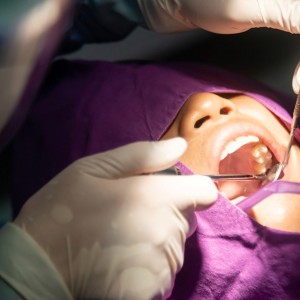
Diagnostic efficacy of orthopantomography in sinus disease
Lara Figini
Panoramic radiography, also known as orthopantomography (OPG), is commonly used in facial and dental pain investigations. This radiographic modality shows the bones of the jaws, teeth, and supporting structures including the temporomandibular joints and the maxillary sinuses. In this tomographic technique to obtain these images, a thin “focal trough” along the dental arch is used to produce a 2-dimensional image of the jaws. A disadvantage of the technique is that structures outside the focal trough can be blurred or not visible at all. The maxillary sinuses generally extend between 28.9 mm and 47.6 mm in the antero-posterior diameter, which is deeper than the focal trough that is designed to encompass the alveolar bone. The panoramic image includes only a portion of the maxillary sinuses, which might limit the value of this radiographic technique for the diagnosis of sinus lesions. In a study conduct by Prof Anderson et al., the authors tried to determine: · the diagnostic efficacy of orthopantomography (OPG) for sinus diseases using Cone Beam Computed Tomography (CBCT) as control · which diseases can be diagnosed using panoramic radiography and which CBCT.
MATERIALS AND METHODS
The images of 714 individuals who underwent OPG and CBCT on the same day were assessed separately by 2 dental radiologists. The results were compared by using Gwet’s AC1 statistical methods.
RESULTS
In total, 1322 maxillary sinuses were imaged. The sensitivity of OPG for the detection of any maxillary sinus pathology was poor compared with CBCT, but the specificity was high.
The sensitivity of OPG for detecting mucosal thickening was 36.7%.
The positive predictive value of OPG for diagnosing mucosal thickening was 79.9 %, but the negative predictive value was 51.9%.
Inter-observer agreement was strong (0.912) for all lesions except mucosal thickening.
CONCLUSIONS
From the data of this study, which must however be confirmed by other similar studies, it can be concluded that the orthopantomography has a low efficacy in the diagnosis of sinus diseases, even if examined by an experienced dental radiologists. OPG can be useful in excluding disease, but 3-dimensional scanning is necessary for the definitive investigation of sinus lesions.
For additional informations:
Panoramic radiography is of limited value in the evaluation of maxillary sinus disease
 Related articles
Related articles
Oral surgery 27 October 2025
The authors assessed the incidence of postoperative bleeding in patients who were highly anticoagulated and in patients who underwent extensive oral surgical procedures and who continued using oral...
Implantology 02 October 2025
Proper implant treatment planning remains the first priority for implant success. Dental imaging is an important tool to accomplish this task.
Oral surgery 05 September 2025
Fentanyl, a short-acting synthetic opioid, has a pharmacokinetic profile suited to fast relief of brief episodic pain.
Oral surgery 22 August 2025
Thiel embalming technique: a valuable method for teaching oral surgery and implantology
Because of its high requirements on surgical experience and the need of complete understanding of the anatomy, oral surgery and especially implantology belong to the most demanding procedures in...
Proper use of oral electrosurgery permits rapid, full management of soft-tissue problems related to mouth preparation for fixed and removable prosthodontics.
 Read more
Read more
Much like EMTs rushing to the scene after an accident, stem cells hurry to the site of a skull fracture to start mending the damage. A new finding has uncovered the signaling mechanism that triggers...
Products 05 November 2025
SimplyTest has launched a groundbreaking saliva-based test to detect high-risk strains of oral human papillomavirus (HPV), a major cause of oropharyngeal cancers.
News 05 November 2025
Perimetrics, Inc., a dental technology company pioneering quantitative diagnostics, announced today that the U.S. Food and Drug Administration (FDA) has granted clearance for the InnerView...
News 05 November 2025
On October 15, open enrollment for Medicare began nationwide. Hundreds of thousands of seniors in New Jersey will once again face the challenge of finding the right Medicare coverage, including the...
Digital Dentistry 04 November 2025
Digitalisation is an expanding field in dentistry and implementation of digital teaching methods in dental education is an essential part of modern education.















